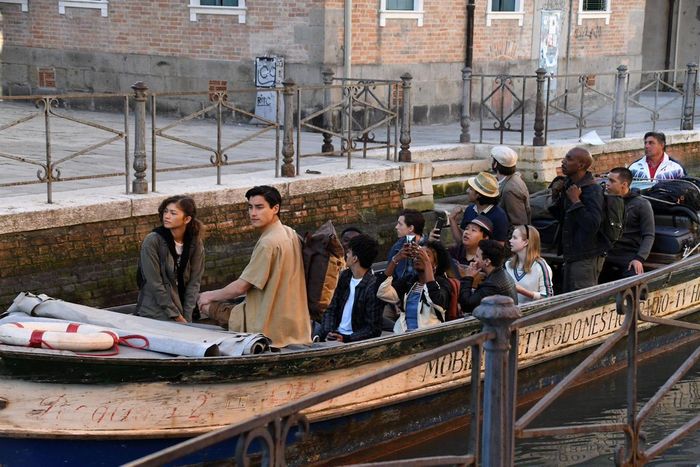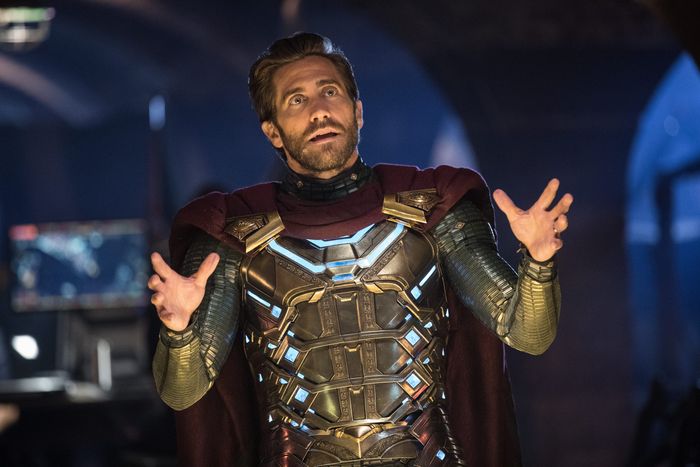
If Marvel fans thought they had it rough — what with having to wait one year to understand how Avengers: Endgame resolved Infinity War’s erasure of half of all life in the universe — the inhabitants of the MCU had it several times worse. For five years, 50 percent of society just limped around their vacant realities, wondering whether or not the missing people would ever pop back into their lives. And just when they’d resigned themselves to the idea that their loved ones wouldn’t be reappearing, snap! They did. All of sudden everyone came back, to a world partially destroyed by several major attacks and still very much reeling from all the trauma that entails.
So how is the world of the MCU doing in a post-Endgame era? As the next film in the franchise, it was up to Spider-Man: Far From Home to explain how Thanos and the Thanos reversal changed everything. Here are the big Endgame questions that Far From Home answers. If it isn’t obvious, minor spoilers ahead:
When does Far From Home take place, exactly?
At least five years after 2018’s Avengers: Infinity War, though it’s probably closer to six, which would likely place the events of the film in the summer of 2024.
In the very informative student news broadcast which kicks off the film, Peter Parker’s classmate, Betty Brant, notes that she and half of her current classmates, the ones who were turned to dust back in 2018, were forced to redo the entire school year once they reappeared on Earth in 2023. This despite the fact that they already completed their midterms! Which means they were closer to the end of the school year when they disappeared than the beginning. Between that bit of evidence, and the fact that it definitely wasn’t mid-winter in New York City during the events of Infinity War, it’s probably fair to say Far From Home takes place at least a school year after the events of Endgame.
What are the inhabitants of the MCU calling “The Snap” these days?
Although MCU fans have called Thanos’ erasure of half of all life “The Snap” or “The Snappening,” that’s not what the characters are calling it. Instead, they refer to the entire five-year period as “The Blip.”
The name makes sense for a lot of reasons, both within the fiction of the MCU and from a narrative perspective. There were only a handful of characters, all superheroes, who were around when Thanos actually snapped his fingers, so it’s understandable that the physical act of snapping might not be the most widely prominent part of the entire incident. More than that, though, The Snap was the thing that made everyone disappear, but it doesn’t really cover the ensuing half-decade and the surprise of everybody eventually coming back. The snapping part of The Blip could, for all we know, still be called The Snap, but the entire thing was just a little blip.
Calling the temporary death of half of all life in the universe a “blip” also helps set the tone of the MCU going forward. An earlier in-universe name for the event was “The Decimation,” which was both too somber and definitionally wrong. As the franchise has leaned more and more into its comedic potential, “The Blip” seems like a phrase its funnier characters won’t mind uttering in the future. It’s just silly enough to let viewers know that Far From Home is going to be fun, just like Spider-Man: Homecoming was, instead of a Leftovers-esque exploration of grief and broken marriages.
So, Far From Home doesn’t get into any broken marriages?
Actually, it does. In Far From Home, we learn that Peter’s teacher, Mr. Harrington (Martin Starr), did not disappear in The Blip, but his wife did. Well, sort of. She faked her disappearance over five years ago in what we’re meant to assume was an effort to escape her husband, leading Mr. Harrington to hold a funeral for her. It sounds so dark! But it’s played for laughs.
Do we learn of any other Blipped characters?
It appears that pretty much all the major Spidey characters blipped, including Peter, Aunt May, Ned, MJ, Flash Thompson, and Betty Brandt. This means that 50 percent of Peter’s class now consists of kids who were in elementary school when Infinity War happened (like Remy Hii’s Brad Davis), and that 50 percent of their old classmates have gone on to college and beyond.
When and how did people reappear after The Blip?
As seen in cellphone video taken from a basketball game at Midtown School of Science and Technology during the events of Endgame’s conclusion, anybody who was dusted came back suddenly and in the same place where they disappeared. The marching band members who turned to dust reappeared in the same gymnasium in the same formation, and it happened so suddenly that non-dusted basketball players ran right into them when their classmates materialized, still tooting on their trombones.
They were still playing instruments? But shouldn’t they have “not felt so good” before turning to dust, like Peter and the other heroes did?
If you are desperate for an in-universe explanation, Matt Aiken, the lead VFX supervisor for Weta, one of the effects companies that worked on Infinity War, said that Peter was fighting the dust the longest because he’s so strong. If you take Aiken’s word as gospel (keeping in mind that he didn’t write the script or anything), you could chalk up the instant dusting of the high schoolers as just being the speed at which most non-superheroes disappeared.
The more likely answer, however, is that the comedy of the scene played better if the marching band disappeared and reappeared really quickly. That way Far From Home didn’t need to open with images of teenagers slowly dying.
What about the people who were in airplanes when they disappeared? Did they reappear in the sky?
Far From Home does not answer this question explicitly. Technically speaking, if the disappeared came back in exactly the place where they turned to dust, they would have reappeared floating in space somewhere, due to the orbit and rotation of the Earth. But Far From Home doesn’t want to spend too much time wondering whether 50 percent of all airline passengers suddenly plummeted to their deaths, and it doesn’t want you to spend much time wondering about it either. Everyone’s fine. Maybe just assume Bruce Banner took precautions when he snapped the Infinity Gauntlet.
So, were there any downsides to half of Earth’s population suddenly reappearing?
Metropolitan cities in the United States and Europe seem to be doing pretty well, all things considered. Aunt May, with Spider-Man’s celebrity help, is running a charity to help people who were displaced by The Blip or otherwise need aid. She recalls how she suddenly reappeared after five years inside her apartment, only to find that new tenants had moved in. The charity is raising a good amount of money (thanks in part to the giant check Pepper Potts had Happy Hogan send over) to re-home people, so there’s an acknowledgment that the returned need support and that they’re being given it. For the purposes of Far From Home’s narrative, it’s enough.
So if you’re caught up pondering how the world could suddenly recalibrate to feed and fuel the return of 3.5 billion people after industry has probably contracted, or how political systems could adapt to an influx of constituents and previously disappeared elected and appointed officials, well, keep pondering.
Logistics aside, how is society dealing with the fact that something like the five-year erasure of all life is possible?
This is the most interesting post-Blip question with which Far From Home grapples. (Significant spoilers to follow.) When Quentin Beck successfully tricks Peter into giving him the E.D.I.T.H. glasses Tony Stark gifted to his protege, he thanks his team for all their hard work in a very exposition-heavy speech. In it, he mentions that one member of his team, Guterman, wrote the ridiculous backstory for Quentin’s fake superhero, Mysterio, which alleges that the caped crusader is from an alternate version of Spider-Man’s planet, one that fell to a group of mega baddies called Elementals. Mysterio, so the backstory goes, has come to this Earth (which he dubs 616) to save it from those same villains. According to Quentin, it’s exactly the type of far-fetched tale that people are willing to believe.
The MCU public’s relationship with superheroes has changed a lot since 2008. Around the time of Iron Man’s debut, a billionaire inventor in a super-suit was a controversial concept, but a few years later, people had to get used to the idea that Norse gods are real, that magic stones exist, and that aliens can and will attack Earth. Now that Iron Man is dead and Captain America is gone (those two, along with Black Widow and Vision, are basically martyrs in 2024), civilians of the MCU are extremely thirsty for a hero who can once again ensure their safety in a chaotic world. This isn’t Civil War times, when the public turned on the very concept of costumed vigilantes/literal gods. It’s an amped-up version of post-Battle of New York 2012 times, where superheroes are experiencing an unprecedented new level of fame and appreciation. (See: Professor Hulk.)
Even in the post-credits sequence, when Mysterio manages to frame Peter Parker as a villain, he’s cashing in on the overall level of goodwill that now exists. People are primed to believe in the goodness of Mysterio, and when that good guy convinces them that Spider-Man did some bad things, well, that’s Spider-Man’s problem, not superheroes’.
Okay, but are the kids who Blipped, and whose licenses might now indicate that were born more than 21 years ago, allowed to drink?
No, but Flash Thompson sure tries.





